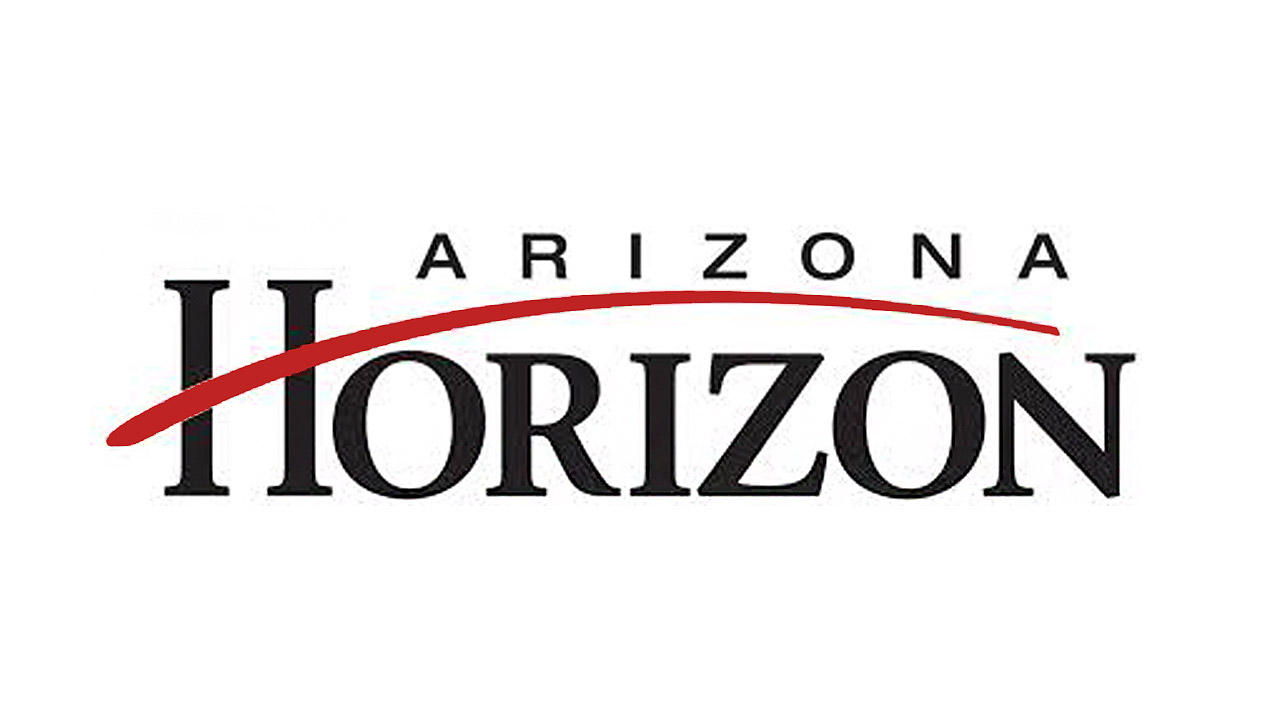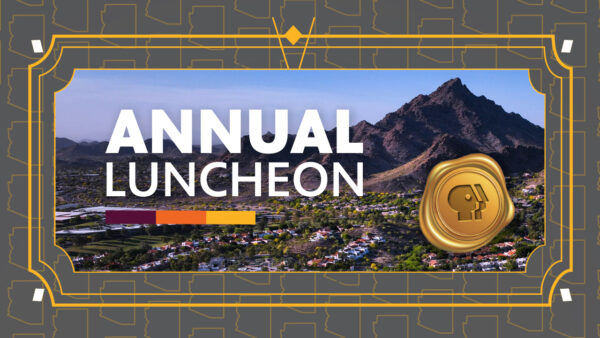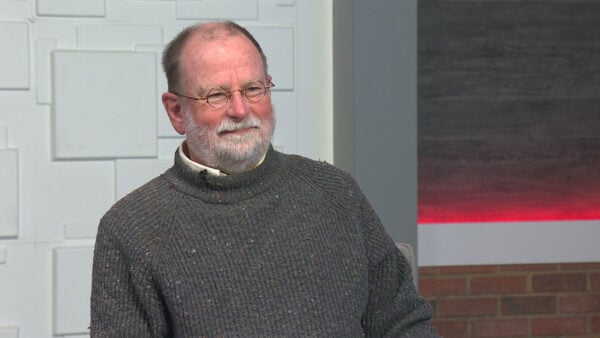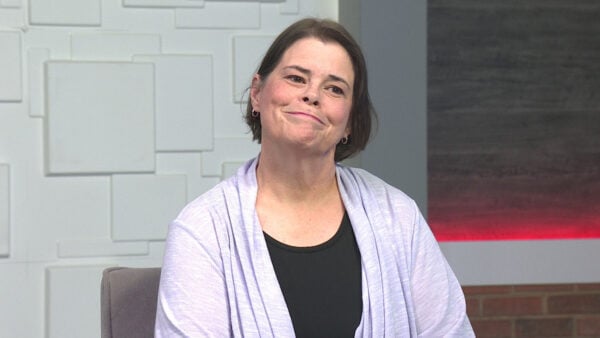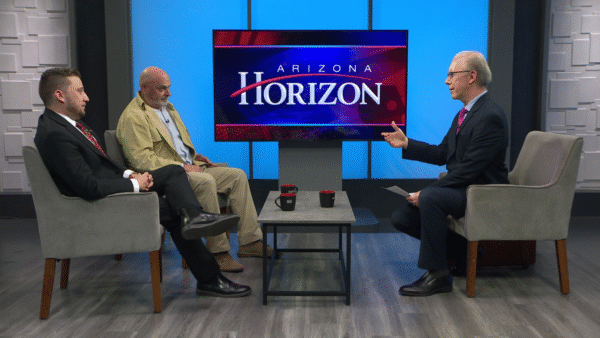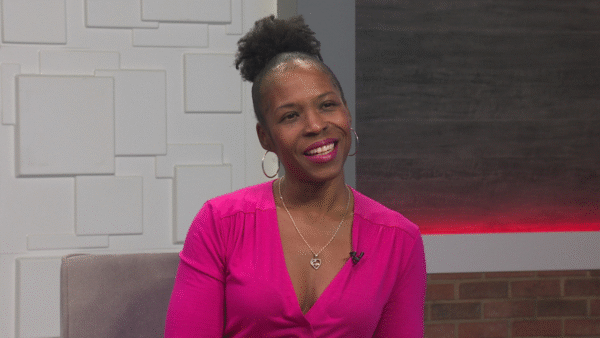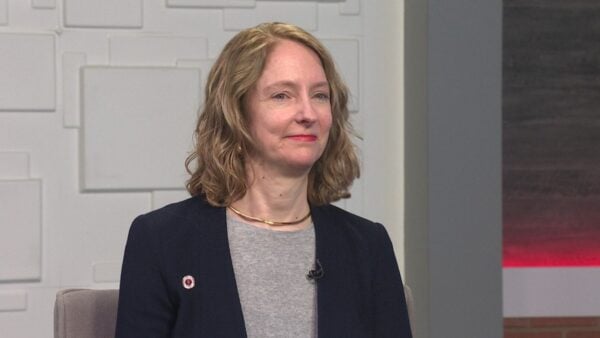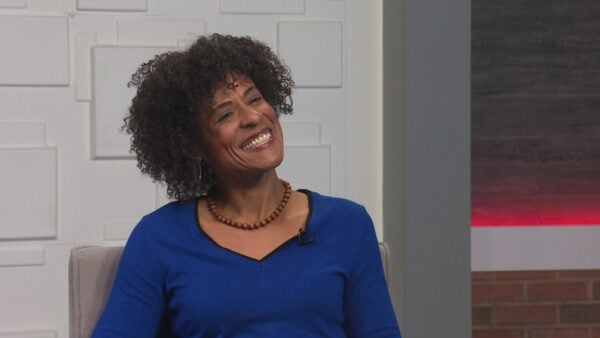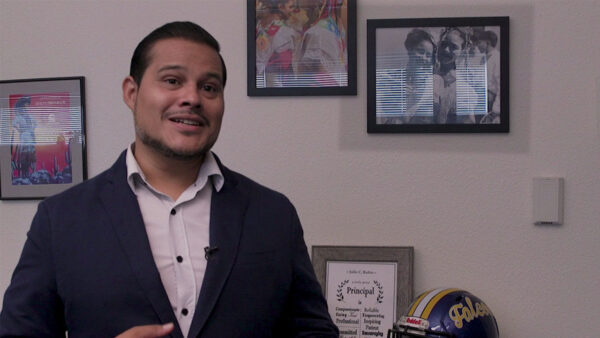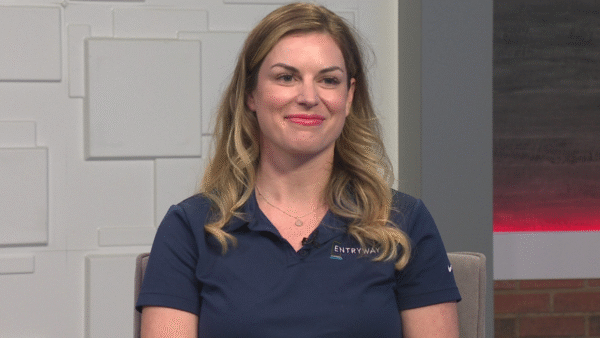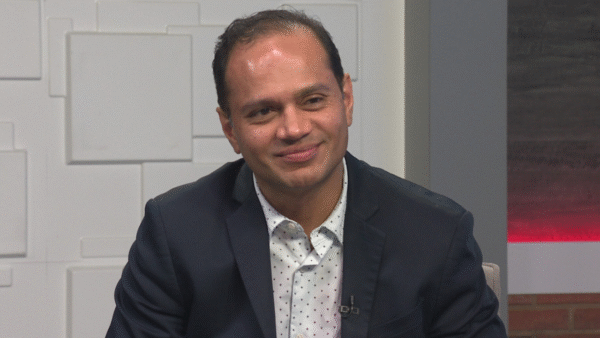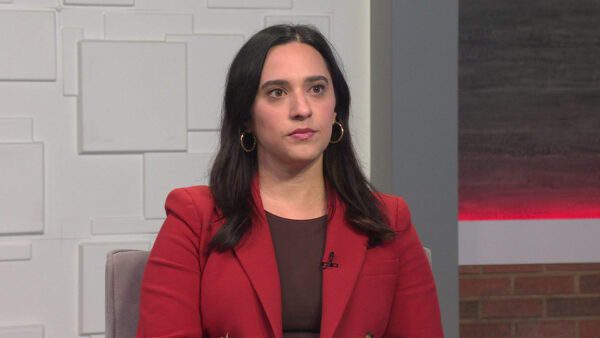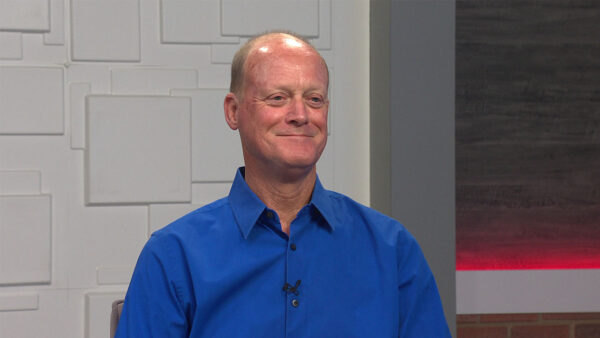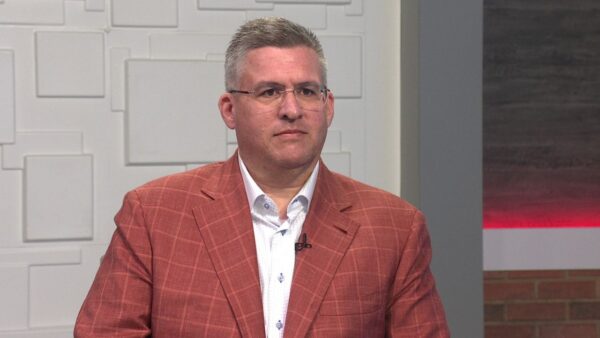We start a series on the challenges affecting education in our state. Arizona Education Report Card – tonight K-through-12. From all day kindergarten to classroom dollars, where do school officials stand on the issues?
>> Michael Grant:
Tonight on "Horizon," we start a series on the challenges affecting education in our state. Arizona Education Report Card - tonight K-through-12. From all day K to classroom dollars, where do school officials stand on the issues?
Also, the Arizona Biltmore Resort and Spa has uniquely impacted the history and style of the Valley. Its remarkable story tonight on Arizona stories.
>> Michael Grant:
Good evening. I'm Michael Grant. Welcome to "Horizon." Tonight we start Arizona Education Report Card. Over the next four days we'll take a close look at issues affecting Arizona community colleges, universities and charter schools, but tonight we start at the beginning. To set up the panel discussion we'd like to show you a typical day, last Tuesday, to be exact, in the Tempe Union School District K-through-12.
(What follows is a natsound package. No one's identity was featured.)
>> 1 and play and 1...
>> Barber shop.
>> Joshua.
>> Every time you wake up in the morning, I find my dog standing on my bed.
>> I don't want to wake up, so I can go to school, so my mom has to wake me up, and I don't want to.
>> You just want to sleep in.
>> And hold the pillow and my mom picks me up with the pillow.
>> You and the pillow together?
>> It's like a bulldog.
>> A bulldog, right?
>> And it's all chubby. It's all muscular, chubby.
>> Would have, would have!
>> We have another friend with a hand up.
>> Then he gets off the bed and then she goes -- then she would come to both our beds until we get out of them.
>> Over and up, over and up, over and up. All right. So thumbs up if you grade that D. Yes, good. Number 7. This is an interesting one. This is using your logic smarts. Any time you see a story problem, I would read through it a couple times, make sure you understand what they're talking about, look for signal words in it, and if you don't get what they're talking about the first time, read it again just to make sure you're clear on what they want you to do. So here we go. Tom read one book last month and two books this month. Each month this year Tom will read one more book than he did the month before. So which of these statements is true based on this information they gave us?
>> Again, we are creating an image in your poetry, using the words to put the reader there. Like we've done with 4-A and so much depends upon. In your packets you have the format for the "I remember" poem. Remember, it's eight lines of "I remember" and the then the last line is "but most of all I remember." Now, can you have -- do you have to have eight? No. You can have as many as you want. Don't make it a book. I'm going to go ahead right now. You may divide up, get where you need to be and go.
>> I could start with "I remember...".
>> 3, 4 and one and play and... 3, 4 and 1 and 2 and 3 and 4 and...
>> We're going to be hitting you with a lot of integral tests, or a lot of tests to tell whether something is convergent or divergent. What we have here is called the integral test. Let me take you through this wheel -- it kind of looks like Greek to you but it's not so bad.
>> You can split the bottom into this, which turns into this. So you can split it into two fractions and if you find X approached infinity, you know it conversus --
>> The total area of the carpet is zero by taking out the middle of the square. So I did a sequence -- you take out 1/9th and 8 parts of the 8 remaining squares --
>> To find the sum you can split the two fractions up and add them at the end, and you can use the geometrics because it is a geometric series but instead of N minus 1 you don't have --
>> It was 1 minus X minus 4.
>> So you still take A, 1 minus R and your A for this is just 1, and then your R a one half.
>> This cancels out so you have A times negative 1 which equals negative 3.
>> First two words of the home are...
>> That's your last one.
>> Go!
>> Eyes and ears and mouth and nose, head, shoulders --
>> No talking.
>> Michael Grant:
Day in the life. Here now to talk about some of the matters concerning Arizona public education, the Arizona Superintendent of Public Instruction Tom Horne, President of the Arizona Education Association John Wright, and a consultant for the Arizona School Administrators, Mike Smith. Mike, you were telling me that the rumor is that $17 million maybe is the magic number for all-day K. Legislature may start trying to move that sometime tomorrow?
>> Mike Smith:
In the new revised budget proposal that they're putting together in the Senate appropriations tomorrow afternoon. That's the number we understand will be in there for expanding the all-day K program.
>> Michael Grant:
That's not far off the 20 million that the governor had asked for anyway, right?
>> Mike Smith:
No, it isn't.
>> Michael Grant:
Of course, we don't know --
>> Mike Smith:
What strings are attached to it, either, is another question.
>> Michael Grant:
Tom, all-day K, you got a lot of people that say, hey, it's especially important for early development in grades 1, 2 and 3. You got a fair number of people who say, no, it's just state-sponsored baby-sitting. Where are you on that?
>> Tom Horne:
Well, I support it and, of course, you want to be sure it's not going to be state-sponsored baby-sitting. We have academic standards for kindergarten. If it's used for phonemic awareness to prepare kids for reading and pre-math skills to prepare them for math then the studies show that it improves their academic performance over the long term. And in fact, a dollar spent in early childhood is worth 7 or $8 spent later on in high school to get the same academic results because in early childhood, the students' minds are more flexible and it sets them up for better learning. Now, if you don't have the standards and if it is all day baby-sitting then obviously it's of no benefit. So I see my role as monitoring and being sure we get the word to the teachers and check to be sure the teachers are really doing the academic standards.
>> Michael Grant:
John, I know you taught first grade, so you were almost down at that level. I wonder developmentally, though, from a programmatic standpoint, teachers maybe devoted to the cause but just from a development standpoint, 5-year-olds, that's kind of a long-haul in all-day K.
>> John Wright:
They are at the readiness stage and you have to be sure that you've got a program that develops readiness. It's true, I taught first grade and I think you can find the best advocates for all day kindergarten in first grade classrooms when they see those children ready, they're prepared to learn math, prepared to work with each other, they can work with text even though it's very basic. A 5-year-old you have to be very careful that you have a child ready to enter kindergarten. It's going to be all day it's critical we're not putting a child in there before they're developmentally ready. Having parents talk to teachers and be sure kindergarten if it's a late summer and early fall birthday for the child, that's important.
>> Michael Grant:
From an administrator standpoint is all day K a competitive issue? Between schools those who offer it, those who don't?
>> Mike Smith:
No, I believe it's universally endorsed by all the administrators in all schools, as John pointed out. It's a good foundation to move forward. The struggle and part of the budget issue is to find the resources to be able to provide all day K. Currently that burden rests with the districts at the community request. The governor is advocating strongly that state support it --
>> Michael Grant:
Because more than half the districts currently have schools that offer all day K. It's just it's a local option.
>> Mike Smith:
And they struggle hard because they see the benefits of it in the grades as it progresses on. So they try to find those resources, limited though they are, to provide it -- provide at least some opportunity for all day K within the district.
>> Michael Grant:
I suppose you can't talk K-12 subjects, John, without talking the AIMS test but I'm going to try to avoid that.
>> John Wright:
Okay.
>> Michael Grant:
Let me go to a slightly different but related subject, which is just there's growing concern that we may just simply be over testing. We're just spending way too much time on tests.
>> John Wright:
It's interesting you say that this evening. Because, of course, AIMS was being administered in schools in high schools across the state last week. I have spoken to you, I have two high school daughters, and the younger, the freshman, came home today after taking another standardized tests and said, dad, they really are giving us a lot of tests. So I think we as an education community, schools and district, need to look at what data it is we're looking for in these assessments and let's find the best assessments to give us the most data. And some standards based data to see how we're doing in our classrooms up against Arizona academic standards.
>> Michael Grant:
Tom, that's basically the fusion between AIMS and was it Stanford?
>> Tom Horne:
Yes, that was really my proposal, which I present to the state board and was quite a fight. The Arizona business education coalition wanted to do a pilot program. I wanted to get right into it because teachers and parents and kids were saying they were over tested. Two weeks of testing in the spring with the young kids they were so tired it was hard to get them back on task the rest of the spring. I pushed for a compression so we're testing in one week rather than two weeks, then the kids can get back to learning and we have more learning time and I think that's important. So we've made after a long struggle to get this through on the state board level a big step forward reducing from two weeks of testing to one week of testing and despite the fact we've reduce identify it from one week of testing we're getting the same reports and reporting by concept for the first time. We're going to be reporting in June rather than September so they have the summer to remediate. So I think I'm giving the public a pretty big bargain, a lot more reporting for half the testing.
>> Michael Grant:
Mike, I think you agree that that was a step in the right direction?
>> Mike Smith:
I give full credit to the department for the effort to try to combine tests and he can extract the same data. We're looking forward to seeing the data as it comes out on the other end that we meet both the national norm reference and the AIMS specific standards and we have diagnostic tools. Help us remediate those kids who need remediation.
>> Michael Grant:
Dollars in the classroom, you and your ilk take too many dollars out of the classroom. Defend yourself.
>> Mike Smith:
This is a struggle. We go round and round on. The bottom line is a definitional war we're fighting about. What constitutes dollars in the classroom. Representing administrators, our tough issue is the assumption is easily said, once we know dollars in the classroom, all other dollars are administration. The problem is there's a huge gray area in that debate.
>> Michael Grant:
What's gray? Buses gray?
>> Mike Smith:
The example, the easier example that really gets people thinking about things, is the auditor general was forced to make this initial definitional concept under the 301 obligation they had, prop 301. They had to go in and assess where the dollars were going and what dollars were going in the classroom. They had to make some definitional decisions. Is a master teacher who is working with teachers directly in the classroom but working with the teachers in the classroom, is that a classroom cost or is that an administrative cost? Auditor general said administrative cost.
>> Michael Grant:
John, I would think that teachers would be very supportive of the effort, and I don't care if you want to call it 65 cents -- we've had a discussion about maybe -- 95 cents -- whatever level you want, I would think teachers would be supportive of, and I realize the definitional issue, but drive more dollars to the classroom.
>> John Wright:
Drive more dollars to the classroom. That's absolutely right. We have been working with the governor to do that. I don't think you'll find anybody who will disagree with that. You get some gray issues and definitional problems and we can work on that. The main is issue when you get some sort of scheme as was introduced a couple of years ago that will require people to budget by percentage, now you've got a straitjacket. You don't have a budget. You are essentially moving dollars around in an under-funded system and that's not more dollars to the classroom and it's not reform. What we need to see is a way to get more dollars to teachers, more dollars to classroom supplies, more dollars to programs that affect students, more dollars to libraries and librarians, counselors. Let's worry about the definition someplace else but put the money writ really counts.
>> Michael Grant:
Tom, the way I read the auditor general report was the auditor general was basically saying, listen we're walking in place but if you dip beneath the data a little about it, actually if districts maintained the proportionate spending they had prior to the extra dollars they got from 301 we would have gained a point or two. So although it appeared on the face that you were walking in place on this issue, it actually looked like we were losing ground with fewer dollars in classroom --
>> Tom Horne:
Mike, when I was the legislature I had introduced a bill that would have defined administrative costs as district office administration. That's where the real waste is to take out and would've required no more than 5% of the budget in district office. 95% outside the district office. I think that's a better definition. I do support the more recent proposals simply because I think we can save money on administration. When I was first elected to a school board and then in '78 and in '80 I had two friends and we had a majority, we cut our district office in half, put the money into teacher salaries and class size and we survived and since then we've been the most efficient district in the state on most lists. So it can be done. The definition I prefer is district office and require that it be no more than 5%. My old district was 2.7%.
>> Michael Grant:
And your 95% are things like counselors, librarians --
>> Tom Horne:
I don't see any need to pressure schools to cut out librarians, which we need for kids in their reading and love of books or counselors, nurses. I don't agree with the definition that excludes those people. I think we ought to focus on the district office. That's where I think we can save money, where I had some experience saving must not knee a school district.
>> Michael Grant:
I hesitate to call it an 800 pound gorilla, Mike, call it like a 400 pound gorilla s English language learning and the mandate from the federal court in Tucson add least a pretty heavy gorilla? The estimates might be it might be $200 million plus.
>> Mike Smith:
Depending on the numbers you use it could be upwards of $200 million. The legislature is struggling with the study they commissioned that has now come back to them. The court has said, we want an answer and a plan before you go home. And the legislature, the talk this afternoon was that they might be -- have a budget and ready to quit and sine die by Thursday. Not without Flores, you better not.
>> Michael Grant:
John, what's your read on where they are at? I think the judge has been rather definitive that you need a plan before you bring the gavel down.
>> John Wright:
The judge has been very definitive. I think what the legislature is not paying attention to is this is a civil rights issue. This has been settled under their opportunity to learn in our public schools in Arizona. And they're trying to at the legislature now sort of skirt around the edge of this, but I don't think they have that option. It is an equal opportunity issue. It is a civil rights issue to make sure that children who don't speak English still have an opportunity to learn in our schools.
>> Michael Grant:
20 seconds, sorry, Tom, do we can really know what it should cost per pupil?
>> Tom Horne:
We had a study done with certain standards, for example, classes of no more than 15 to 1 for first year English language learner, 20 to 1 for second year, aids in the class with the first year. We're working with the legislature to develop some standards and seeing what resources are available to meet the standards.
>> Michael Grant:
Tom Horne, thank you for joining us. John Wright, good to see you again. Mike Smith, our thanks to you as well. From the moment it opened, February 23rd, 1929, the Arizona Biltmore Resort and Spa marked the birth of Arizona's tourism industry. Over the decades it has been a playground for the rich and famous and remains one the Valley's premier destinations. Although today it's located in the heart of the urban landscape, when it was built it was surrounded by miles of desert. Producer Larry Lemmons and videographer Richard Torruellas brings us tonight's Arizona Story.
>> Vernon Swaback:
Now here's a building which is built with concrete, exposed, no marble, no plaster, no faux finishes, no fanciness. And so here is this building which is just absolutely exposed in the most authentic way, and yet it carries with it a power that money alone could never buy.
>> Larry Lemmons:
In 1929 the Arizona Biltmore Resort was born in the hot, dry desert north of Phoenix. Then as now, this oasis was known as the jewel of the desert, whose very existence would symbolize the potential of a gracious life in the midst of an arid uncultivated landscape. It sparked the development of Arizona's tourism industry. But more than that, it stands as a testament to the power of architecture.
>> Vernon Swaback:
It's the unquestioned symbol of appropriate design, the unquestioned symbol of living elegantly, and it does it by greatness rather than exaggeration. One of the great legacies of the Biltmore, one of its striking messages, is this thing which we refer to as architecture is actually real. It's not a matter of opinion or taste. It's not a matter of fanciness or budgets. It's a matter of appealing to the human instinct for beauty. It's a soulful level. It's almost a mystical power.
>> Larry Lemmons:
If mysticism indeed imbues the Biltmore's design, it's due to the architect on record, Albert Chase MacArthur, and his collaborator and teacher Frank Lloyd Wright. Construction of the resort was costly and MacArthur's brothers who originally owned the hotel lost it the year after completion to chewing gum magnate William Wrigley, Jr. Controversy remains to the extent of Wright's contribution to the design. His influence is evident in many ways but specifically in the Biltmore block, pre-cast blocks made from desert sand on site.
>> Vernon Swaback:
Everybody agrees that Wright worked on this building. There's no question about that. Everybody agrees that Albert chase MacArthur and he came to a parting of the ways and the whole question is what did he do while he was working on it? And those of us who feel strongly about some understanding of Wright's philosophy and the expression of his architecture just see the unmistakable imprint of his designs.
>> Mae Sue Talley:
It was also a very gracious establishment in those days. And I think that enriched the community because people were able to enjoy that way of life. When Mr. Wrigley owned it, when we owned it, it was the number 1 resort in the nation. It was the only five-star hotel in Arizona. So, of course, wealthy people sought the best, and when they saw the Biltmore was the number 1 resort in the United States they came here. Also there was a very loyal following in the early days, namely when Mr. Wrigley owned it, of eastern families who would come and spend the bulk of the winter. They would take one of the cottages or a suite and they enjoyed the wonderful clean air we had then. It was open spaces. It was beautiful desert. 12 hundred acres -- 1200 acres open land around the hotel, there wasn't much beyond it in those days. So it had a special magic. I mean, people really loved coming and enjoying that.
>> Larry Lemmons:
In 1973 the Biltmore caught fire shortly after the Wrigley family sold the hotel to Talley industries. Rather than raze the cherished Arizona institution the Talleys decided to rebuild.
>> Vernon Swaback:
The Taliesin architects of the Frank Lloyd Wright foundation were engaged to undertake the restoration which had to happen in a period of 90 days. Up until that time all the resorts in Phoenix basically closed for the summer, which was the Biltmore's pattern. So it was closed when the fire started. Price Waterhouse was the first convention booked in for September to September 23rd, and so a decision had to be made whether to go into high gear, you know, like three shifts a day and get the hotel ready, which meant horrendous expense and effort, or to miss a whole season. So the decision was made to restore the hotel quickly.
>> Mae Sue Talley:
We did somehow manage to finish it. They were laying the carpet in the lobby at 3:00 a.m. the morning that we opened for our first guest to come.
>> Larry Lemmons:
Today the hotel is under new management, but the jewel still sparkles, and the legends endure of the place where Irving Berlin wrote white Christmas, where guests could get around prohibition, where a multitude of celebrities and politicians continued to stay. The Arizona Biltmore is not overtly lavish, nor especially exclusive. It is simply one-of-a-kind.
>> Vernon Swaback:
There's only one Biltmore, and it's that because it's authentic, genuine, it's of the place, it's of the time, it's true to its sense of materials, it has a sense of space which is not about grandeur or bigness, but about responding to human scale, human feelings, and when that occurs, wherever it is, in the face of the earth, it endures.
>> Michael Grant:
Every Monday on "Horizon" we feature a new Arizona story. Next Monday, we'll tell you the fascinating tale of a native American musical success story, Canyon Records.
>>> Paul Atkinson:
About 200,000 people attend --
>> Michael Grant:
Wednesday we will continue the Arizona education report card with a focus on Arizona's university system. Thursday we'll continue the series with a look at the impact of charter schools, and, of course, on Friday we invite you to join us for the Journalists' Roundtable. Since you missed it, tomorrow we'll be focusing on the impact of community colleges in our state. Thank you very much for joining us on this Monday edition of "Horizon." I'm Michael Grant. Have a great one. Good night.
Tom Horne:Arizona Superintendent of Public Instruction;John Wright:President of the Arizona Education Association;
